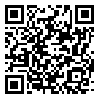BibTeX | RIS | EndNote | Medlars | ProCite | Reference Manager | RefWorks
Send citation to:
URL: http://jdm.tums.ac.ir/article-1-512-en.html
In this investigation, the position of hyoid bone was compared in three skeletal groups of class I, II and III. The study was based on evaluating 77 lateral cephalometric radiographs, 40 girls and 37 boys, which were divided into 3 groups. Group 1, 2, and 3 consist of 26, 25, and 26 radiographs. 19 cephalometric landmarks and 10 planes were used in order to tracing the radiographs. In all patients, 9 skeletal and 4 cervical vertebrae parameters were measured to determine the hyoid bone. These parameters were compared between three skeletal groups regardless of sex and then, in another statistical analysis, parameters were compared based on patients sex. Statistical analysis showed that in class III patients, the hyoid bone was positioned more anteriorly than two other groups. Also in this group, the hyoid bone had less inclination and it was more horizontal in relation to mandibular plane. In skeletal class II patients this bone was positioned more superiorly than two other groups. Due to these findings it can be concluded that perimandibular muscles and bones could affect the growth of mandible. In addition, comparison of the parameters between two sexes revealed that the hyoid bone was positioned more anteriorly and inferiorly in boys. Also it was shown that in the girls, the position of hyoid bone was closer to the position of this bone in skeletal class I patients.
| Rights and Permissions | |
 |
This work is licensed under a Creative Commons Attribution-NonCommercial 4.0 International License. |




